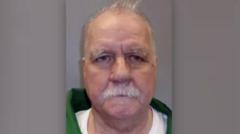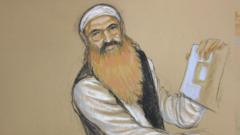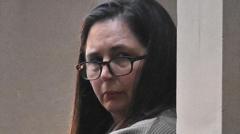Brad Sigmon's execution for double murder marks a controversial resurgence of firing squad executions in the United States, amidst protests and ongoing debates about capital punishment.
A Grim Return: South Carolina Inmate Executed by Firing Squad

A Grim Return: South Carolina Inmate Executed by Firing Squad
The first execution by firing squad in the U.S. in 15 years raises ethical concerns and highlights the ongoing debate over the death penalty.
In a significant and controversial event, Brad Sigmon became the first U.S. death row inmate to be executed by firing squad in 15 years. The 67-year-old South Carolina man was shot to death shortly after 18:00 local time (23:00 GMT) on Friday, as three volunteers used rifles with specially designed bullets to deliver the lethal shots to his chest.
Convicted in 2001 of the brutal murders of David and Gladys Larke, Sigmon had a history of violence, including a kidnapping attempt on his ex-girlfriend that ended with a gunshot intended for her. Despite the chilling nature of his crimes, Sigmon opted for death by firing squad over the state’s alternative execution methods—lethal injection and electric chair—a choice that has now drawn public scrutiny.
According to Chrysti Shain of the South Carolina Department of Corrections, Sigmon was officially pronounced dead at 18:08 local time. The execution was closely monitored, with three members of the Larke family present as witnesses. During his final moments, Sigmon stated, “I want my closing statement to be one of love and apology,” referencing scripture to argue against the death penalty.
Witnesses described a robotic execution procedure, with Sigmon positioned in a chair equipped with a basin to catch blood. A hood was placed over his head before the execution squad opened fire from a distance of 15 feet, without any prior signal. Reports indicated that, following the shots, Sigmon's chest exhibited involuntary movements, and a medical examination confirmed his death approximately 90 seconds later.
His attorney, Bo King, had sought a last-minute reprieve, contesting the execution method and expressing concerns over his client’s mental health and rehabilitation during incarceration. Sigmon, in a gesture of camaraderie, had requested his final meal to be shared with fellow inmates—three buckets of Kentucky Fried Chicken—indicative of the connections he had formed even in death row.
The execution reignited debates over capital punishment as anti-death penalty advocates rallied outside the prison in Columbia. Holding signs proclaiming “all life is precious” and “thou shalt not kill,” protesters argued against the ethics of capital punishment in any form.
Firing squad executions are exceedingly rare; since 1977, only three individuals have faced this method of execution in the U.S., all in Utah, with Ronnie Lee Gardner being the last in 2010. In South Carolina, new regulations passed in 2023 now require the identities of execution team members to remain confidential, further complicating public discourse surrounding the death penalty in America.



















